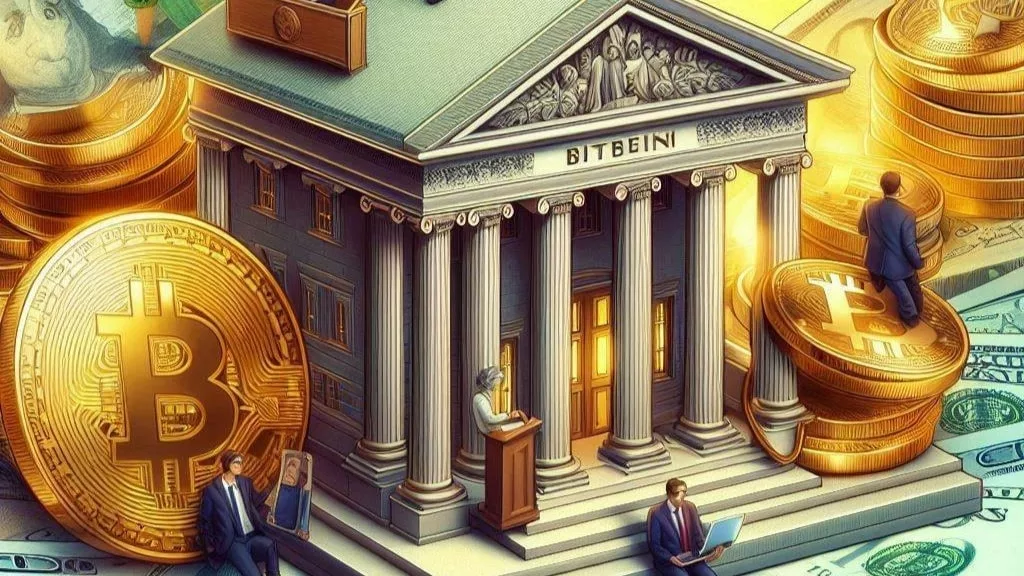
In a surprising turn of events, Binance, one of the world’s leading cryptocurrency exchanges, has undertaken a monumental transaction involving a staggering $524 million worth of BETH. This move has left the entire cryptocurrency community scratching their heads, as it defies conventional understanding. Even industry experts find themselves at a loss, unable to fully grasp the motives behind Binance’s actions. Here’s a breakdown of what transpired and the questions it has raised.
Over the weekend, Binance created an astonishing half-billion dollars’ worth of BETH, a digital asset intricately linked to Ethereum’s Beacon chain. What makes this move particularly intriguing is that the newly minted BETH accounts for nearly 50% of the total BETH in existence. However, there was no discernible activity or “burning” on the blockchain to justify the creation of such a massive quantity. To further deepen the mystery, Binance’s ETH2 deposit account displayed no signs of this monumental transaction. Additionally, when it comes to BETH transfers, only eight were recorded in the past 12 hours, a number identical to its counterpart, WBETH (Wrapped ETH). The question then arises: who is utilizing all this WBETH on Ethereum’s Layer 1? This enigma poses a substantial question, or should we say, the “$524 million question.”
Two days after this enigmatic activity, Binance took an astonishing step by burning the entire $524 million worth of BETH. The reasons behind this dramatic move are far from straightforward. BETH and WBETH are complex financial instruments that even seasoned market participants struggle to comprehend. Essentially, they are Ethereum tokens wrapped to represent other assets, thereby enhancing liquidity and facilitating easier trading. However, the burning of such a colossal amount by Binance remains shrouded in mystery, leaving the crypto world with more questions than answers.
One theory suggests that this move could be a strategic maneuver to manipulate the market or adjust liquidity. Another possibility is that Binance is conducting trials for new financial products or services. Regardless of the rationale, the sheer scale of this operation has triggered a cascade of inquiries and casts a shadow over Binance, which continues to grapple with regulatory scrutiny.
To comprehend the significance of Binance’s $524 million move, let’s delve into the intricacies of BETH and its counterpart, WBETH. BETH represents a digital asset tied to Ethereum’s Beacon chain, a critical component of Ethereum 2.0, the network’s ambitious upgrade. In contrast, WBETH is Wrapped Ethereum, a token that mirrors the value of Ether (ETH) and is utilized for various purposes within the Ethereum ecosystem.
The process of “wrapping” involves converting ETH into WBETH, making it compatible with decentralized applications (dApps) and decentralized finance (DeFi) protocols. This wrapping process enhances liquidity and allows for seamless trading of ETH within the Ethereum ecosystem.
Now, back to the mystery at hand. Binance’s creation of $524 million worth of BETH raised eyebrows because it accounted for a substantial portion of the total BETH in circulation. Moreover, there was no observable activity on the Ethereum blockchain that would typically accompany such a significant minting of tokens. This anomaly left the crypto community baffled and speculating about Binance’s motives.
The cryptocurrency space is no stranger to conjecture, and Binance’s actions have fueled a flurry of theories and speculations. Here are some of the prevailing ideas circulating within the crypto community:
One theory posits that Binance’s creation of BETH and subsequent burning could be a strategic move to manipulate the cryptocurrency market. By introducing a massive quantity of BETH and then removing it from circulation, Binance may have aimed to influence the price of BETH or other related assets. This type of market manipulation, if proven, could have serious consequences and raise regulatory concerns.
Another possibility is that Binance was testing the waters regarding liquidity adjustments. Liquidity is a crucial factor in cryptocurrency markets, and exchanges often employ various strategies to ensure an optimal trading environment. Creating and burning tokens could have been an experimental maneuver to gauge the impact on liquidity within the BETH market.
Cryptocurrency exchanges are known for their innovation and experimentation. It’s plausible that Binance was testing new financial products or services related to BETH and WBETH. These experiments may have required the creation and subsequent removal of a substantial token supply to assess their viability.
In the ever-evolving landscape of cryptocurrency regulations, exchanges like Binance are under constant scrutiny. The creation and burning of tokens might have been a compliance-related action, aimed at adhering to regulatory requirements in specific jurisdictions.
While these theories provide some insight into possible motivations behind Binance’s actions, it’s essential to note that the exchange has yet to provide a comprehensive explanation. The lack of transparency surrounding such a significant transaction has raised concerns among both crypto enthusiasts and regulatory bodies.
Binance has been no stranger to regulatory challenges in recent times. Several countries and regulatory authorities have expressed concerns about the exchange’s operations, prompting investigations and, in some cases, regulatory actions. This latest episode involving BETH has only intensified the spotlight on Binance and its practices.
Regulatory scrutiny of cryptocurrency exchanges is a global phenomenon. Authorities are keen on ensuring consumer protection, preventing illegal activities, and maintaining the integrity of financial systems. As a result, exchanges are under pressure to comply with a diverse range of regulatory frameworks, which can vary significantly from one jurisdiction to another.
The lack of transparency surrounding Binance’s $524 million BETH transaction has fueled skepticism and further eroded trust in the exchange. To navigate these regulatory challenges successfully, Binance and other exchanges must prioritize transparency, compliance, and proactive engagement with regulatory bodies.
The cryptocurrency market is known for its volatility, and major developments involving prominent exchanges can send shockwaves through the industry. Binance’s unprecedented move has sparked uncertainty and speculation, contributing to a sense of unease among traders and investors.



Get the latest Crypto & Blockchain News in your inbox.